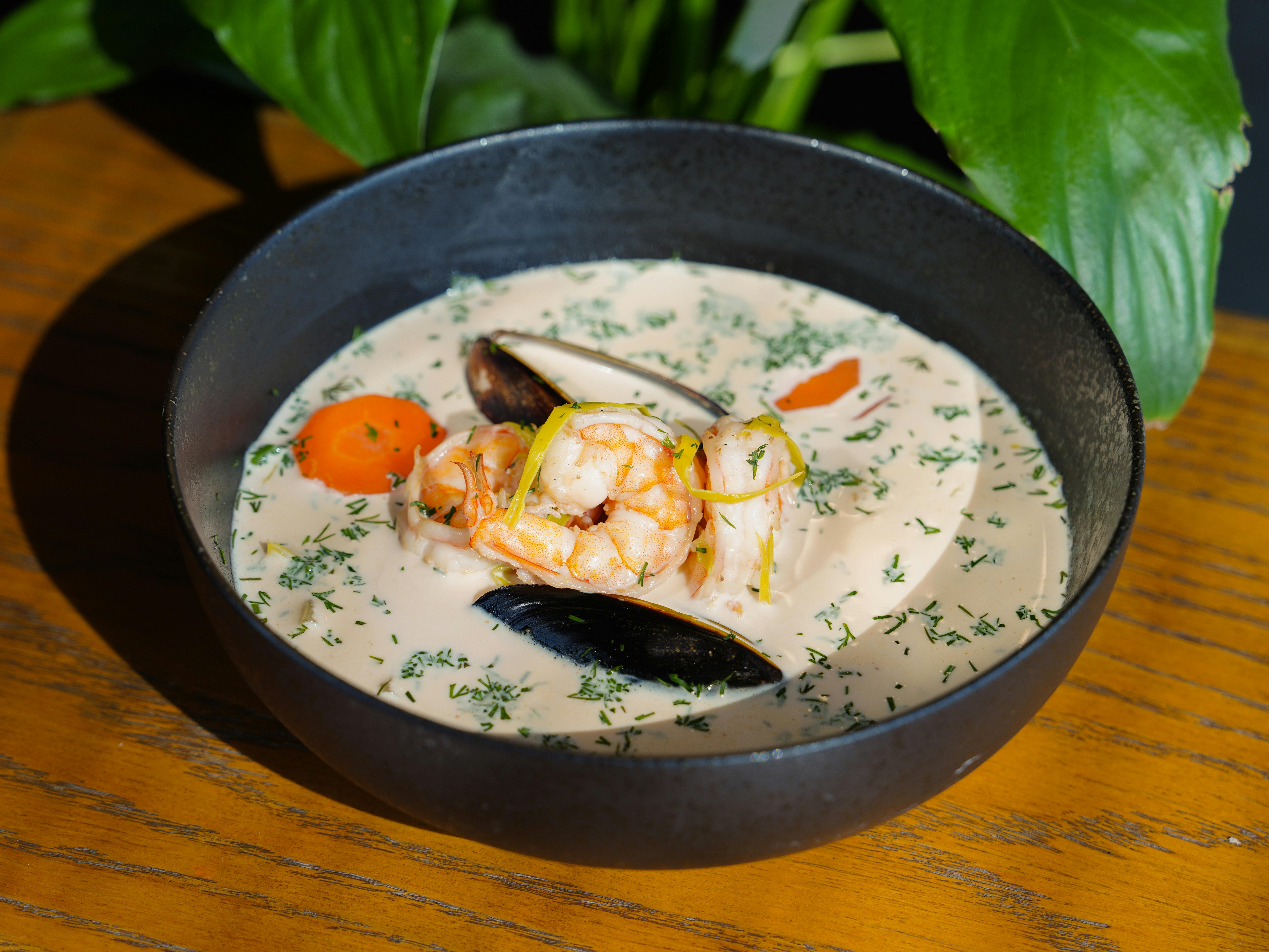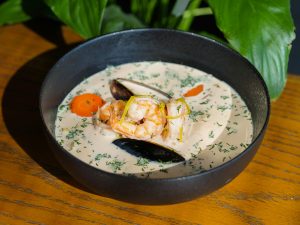Keto Seafood Chowder: A Rich and Creamy Low-Carb Delight

Keto Seafood Chowder offers a comforting and flavorful meal that aligns perfectly with a ketogenic lifestyle. By replacing traditional high-carbohydrate ingredients like potatoes with low-carb alternatives, this chowder delivers a creamy, satisfying experience without the carb overload. This article explores the key components, variations, and benefits of preparing a delicious keto seafood chowder, drawing on popular recipes and insights available as of August 2025.
The Foundation of Keto Chowder
Traditional chowders often rely on starchy vegetables and flour for thickening, making them unsuitable for a ketogenic diet. Keto seafood chowder masterfully navigates these limitations by incorporating low-carb vegetables and healthy fats to achieve a rich, creamy texture and satisfying flavor profile.
Low-Carb Vegetable Substitutes
The most significant adaptation in keto chowder is the replacement of potatoes. Several vegetables are commonly used:
- Turnips: Often cited for their ability to mimic the texture and mild flavor of potatoes, turnips are a popular choice. They cook down to a tender consistency, absorbing the savory broth beautifully.
- Daikon Radish: Similar to turnips, daikon radish offers a neutral flavor and a texture that can stand in for potatoes.
- Cauliflower: Cauliflower can be used in florets or pureed to add creaminess and body to the chowder.
- Celery Root (Celeriac): Another excellent option for its potato-like texture and subtle flavor.
Creamy Base and Flavor Enhancers
The characteristic creaminess of chowder is achieved through healthy fats:
- Heavy Cream: A staple in keto cooking, heavy cream provides richness and a smooth texture.
- Full-Fat Coconut Milk: Offers a dairy-free alternative for creaminess.
- Cream Cheese: Can be used to add extra richness and thickness.
- Mascarpone Cheese: Another dairy option for achieving a silky smooth texture.
Flavor is further enhanced by:
- Bacon: Adds a smoky, savory depth and can be used for rendering fat to sauté vegetables.
- Clam Juice or Fish Stock: Forms the flavorful liquid base of the chowder.
- Herbs and Spices: Thyme, garlic, onion powder, paprika, and cayenne pepper are commonly used to build flavor.
Popular Keto Seafood Chowder Recipes and Variations
Several approaches exist for creating a delicious keto seafood chowder, with variations catering to different seafood preferences and dietary needs.
Classic White Fish and Bacon Chowder
A foundational recipe often includes white fish like cod or haddock, paired with bacon for a smoky foundation. Turnips or daikon radish are typically used to replace potatoes, while heavy cream provides the luxurious texture. This version is relatively quick to prepare, often taking around 30-40 minutes from start to finish.
Shrimp and Salmon Chowder
This variation incorporates heartier, fattier fish like salmon alongside shrimp. The combination of shrimp and salmon offers a robust seafood flavor and beneficial omega-3 fatty acids. Cauliflower is often used as the low-carb vegetable component in this recipe.
Mixed Seafood Chowder
For a more diverse seafood experience, recipes may include a combination of shrimp, scallops, crab meat, and white fish. This allows for a complex flavor profile and varied textures within the chowder.
Thickening Agents
To achieve a desirable chowder consistency without flour, keto recipes often employ:
- Glucomannan: A soluble fiber derived from the konjac root, it’s an effective low-carb thickener.
- Xanthan Gum: Another common keto-friendly thickener, used sparingly to avoid a gummy texture.
- Pureed Vegetables: Blending a portion of the cooked vegetables, such as cauliflower, can also thicken the chowder naturally.
Nutritional Benefits of Keto Seafood Chowder
Beyond its delicious taste and keto-friendliness, this chowder offers several nutritional advantages:
- Rich in Healthy Fats: The use of heavy cream, butter, and often fatty fish like salmon contributes healthy fats essential for ketogenic diets.
- High in Protein: Seafood is an excellent source of lean protein, supporting muscle health and satiety.
- Lower in Carbohydrates: By eliminating high-carb ingredients, the net carb count is significantly reduced, making it suitable for keto. A typical serving can range from 6-10g net carbs.
- Nutrient-Dense Seafood: Clams, shrimp, and various fish are packed with essential vitamins and minerals, including vitamin B12, iron, zinc, selenium, and omega-3 fatty acids.
Tips for Success
To ensure a perfect keto seafood chowder:
- Crisp the Bacon Well: For maximum flavor and texture, cook bacon until very crisp and drain it thoroughly.
- Don’t Overcook the Seafood: Seafood cooks quickly. Add it towards the end of the cooking process to prevent it from becoming tough or dry.
- Adjust Seasoning: Taste and adjust salt, pepper, and other seasonings as needed before serving.
- Storage: Keto seafood chowder is best enjoyed fresh. While it can be stored in the refrigerator for a few days, it does not freeze well.
Keto Seafood Chowder stands as a testament to how traditional comfort foods can be adapted to fit a low-carbohydrate lifestyle without sacrificing flavor or satisfaction. With its creamy texture, rich seafood flavors, and customizable ingredients, it’s a hearty meal that can be enjoyed any time of year.
